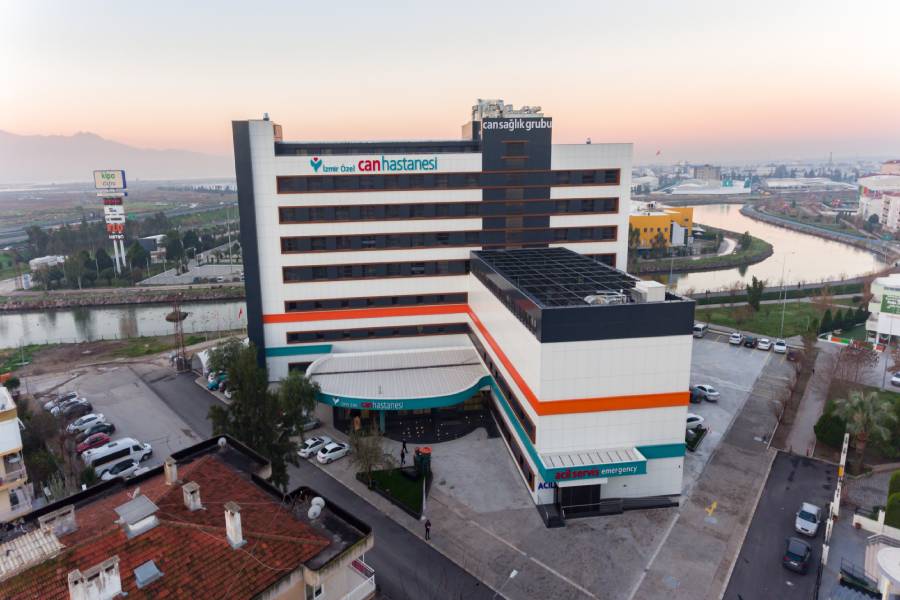The Science Behind Lasik Eye Surgery: How Lasers Correct Vision
Categorised in: HEALTH GUIDE
Published Date:

With unparalleled precision, laser beams meticulously sculpt the cornea’s surface, fine-tuning its curvature to amplify visual acuity. Utilising cutting-edge laser technology, ophthalmic specialists meticulously navigate through the cornea’s complex tissue layers. This enables them to execute minute alterations, effectively mitigating afflictions such as myopia, hyperopia, and astigmatism.
Turkey has emerged as a premier hub for the application of advanced laser technology in ophthalmology. This approach, characterised by its meticulousness, offers a non-invasive solution to vision correction. By targeting the cornea’s sensitive layer, it facilitates a significant enhancement in visual clarity, empowering patients with enhanced confidence in their daily activities.
Understanding the Role of Laser Technology
Advanced laser devices introduce unparalleled precision to contemporary ophthalmic interventions. They execute real-time assessments of corneal topography, meticulously excising only the requisite tissue for optimal results. This methodical approach ensures the preservation of natural corneal contours, significantly diminishing the risk of complications.
The proficiency of the surgeon, coupled with rigorous maintenance of the equipment, underpins the attainment of consistent outcomes. Certain laser systems leverage wavefront technology, tailoring to each individual’s unique ocular morphology. Such personalisation enhances patient comfort and accelerates the recovery process. Individuals often juxtapose the cost of LASIK in Turkey against other locales, seeking superior care at a reasonable price. The cost of LASIK in Turkey frequently emerges as a paradigm of value, balancing quality with affordability.
Many patients discover that the utilization of advanced systems within accredited facilities offers unparalleled precision without incurring exorbitant expenses. This proposition is highly attractive to those endeavouring to reconcile quality with economic viability.
High-calibre lasers undergo rigorous inspections to guarantee their safety and dependability. The meticulous calibration of these instruments empowers surgeons to deliver superior results. Continuous research and innovation continually enhance these technologies, bolstering confidence in the efficacy of the procedure.
Key Considerations Before lasik eye surgery turkey
Anticipating the implications of undergoing lasik eye surgery, individuals often scrutinise their health and vision aspirations. A meticulous medical appraisal precedes any surgical intervention. This evaluation encompasses corneal thickness measurements and assessments for prescription stability and ocular health anomalies.
Engaging with a proficient ophthalmologist in Turkey is imperative for tailoring the most suitable lasik procedure. A bespoke evaluation determines suitability and identifies any contraindications, ensuring patient safety throughout the treatment. The ocular health status is a critical determinant in the decision-making process.
Various lifestyle elements can influence the recovery trajectory. For instance, individuals with dry eyes or those engaged in strenuous physical activities must exercise caution. It is prudent to articulate any apprehensions and seek counsel on preoperative protocols. This methodical approach facilitates an informed decision-making process, bolstering confidence in the chosen path towards enhanced visual acuity. The endorsement of the NHS and the reputation of clinics further enhance the assurance of quality care in this domain.
Step-by-Step Overview of the Procedure
The initiation of the process commences with a meticulous eye examination, aimed at ascertaining corneal thickness and overall ocular health. Utilising cutting-edge mapping technologies, surgeons meticulously tailor the procedure, prioritising patient safety and comfort. This foundational stage is critical, setting the stage for the precise application of laser technology, instrumental in achieving vision correction in Turkey.
The inaugural step entails the creation of a thin flap within the cornea. Utilising a precision instrument, adept professionals meticulously lift this fragile section, facilitating access to the underlying tissue. The subsequent phase involves the application of gentle laser pulses, which reshape the cornea’s curvature. This reshaping is essential for correcting vision. The flap is then meticulously repositioned, facilitating natural healing processes.
Post-procedure, immediate assessments are conducted to confirm the flap’s integrity and the eye’s response. Many patients experience a notable improvement in vision shortly after the procedure, underscoring the appeal of vision correction in Turkey for those desiring swift recovery with minimal interruption to their daily activities.
Potential Benefits and Risks
The procedure’s primary advantages include diminished reliance on spectacles and a rapid return to daily activities. Many report enhanced visual acuity, leading to an overall improvement in their quality of life. Notably, this method typically does not necessitate prolonged hospital stays, a significant advantage for individuals with hectic schedules.
Despite the advent of cutting-edge techniques, complications such as dry eyes, halos, or under-correction can occur. Advanced screenings and customised treatment plans are employed to mitigate these issues. Modern eye clinics in Turkey leverage state-of-the-art equipment to ensure precise surgical outcomes. These clinics prioritise detailed assessments to minimise risks for their patients.
Each patient’s response to the procedure is unique, influenced by their ocular health and adherence to professional advice. Modern eye clinics in Turkey implement tailored follow-up schedules to monitor healing and address any emerging concerns promptly. A balanced understanding of both the benefits and risks equips readers with realistic expectations, fostering informed dialogue with qualified professionals.
Aftercare and Recovery Tips
Adherence to a meticulous regimen post-procedure is imperative. Rest is foundational for expedited recovery, with most professionals advocating for the avoidance of strenuous activities for several days. The use of protective eyewear serves to safeguard against dust or accidental ocular rubbing, mitigating unnecessary strain.
Adherence to prescribed eye drops is a critical component of the recovery protocol, aimed at reducing inflammation and preventing infection. The efficacy of safe laser eye treatments in reputable Turkish clinics is evident, with many patients experiencing a swift return to their pre-procedure activities.
Continued vigilance through regular follow-up appointments is essential, even after visual acuity has improved. The Royal College of Ophthalmologists advocates for ongoing ocular assessments to ensure sustained visual health. The synergy between safe laser eye treatments and diligent aftercare fosters a pathway to stable recovery and enhanced visual clarity in daily life.
Taking the Final Step Towards Clearer Vision
For many, the quest for clear eyesight solutions is a journey towards enhanced comfort and joy. In Turkey, skilled clinics leverage cutting-edge laser technology and rigorous screening protocols. These measures empower individuals to make informed decisions about their vision correction. The adherence to standards by The Royal College of Ophthalmologists ensures that each patient’s unique requirements are meticulously addressed. This meticulous approach streamlines the path to improved vision, alleviating anxiety along the way.
Preparation is key, involving inquiries into the surgeon’s qualifications, the calibre of equipment, and post-operative care plans. Such diligence is instrumental in ascertaining whether a clinic’s ethos aligns with your expectations for safety and efficacy. Engaging in dialogue with medical experts who possess a profound understanding of laser vision correction provides invaluable insights. This dialogue equips you with the confidence to proceed, grounded in evidence and informed decision-making.
Related Posts

Why British Citizens Choose Turkey for Health Services?
British citizens are increasingly opting for Turkey when seeking medical treatments due to a combination of superior healthcare services, affordability, […]

Psychological Effects of Genital Aesthetics on Body Image
In a society increasingly focused on physical perfection, the realm of genital aesthetics has surfaced as an area of both […]

Common Concerns About Genital Plastic Surgery
Genital plastic surgery, a burgeoning field within the realm of cosmetic enhancements, has witnessed a notable surge in popularity. Procedures […]

In which cases is labiaplasty necessary?
Labiaplasty, a procedure that has recently garnered significant attention, involves the surgical reduction of the labia minora. This operation, also […]

Healthy Recovery Process After Genital Aesthetic Surgery
Day Things To Do Things to Avoid 1-7 Days – Bed rest – Using medications recommended by the doctor – […]